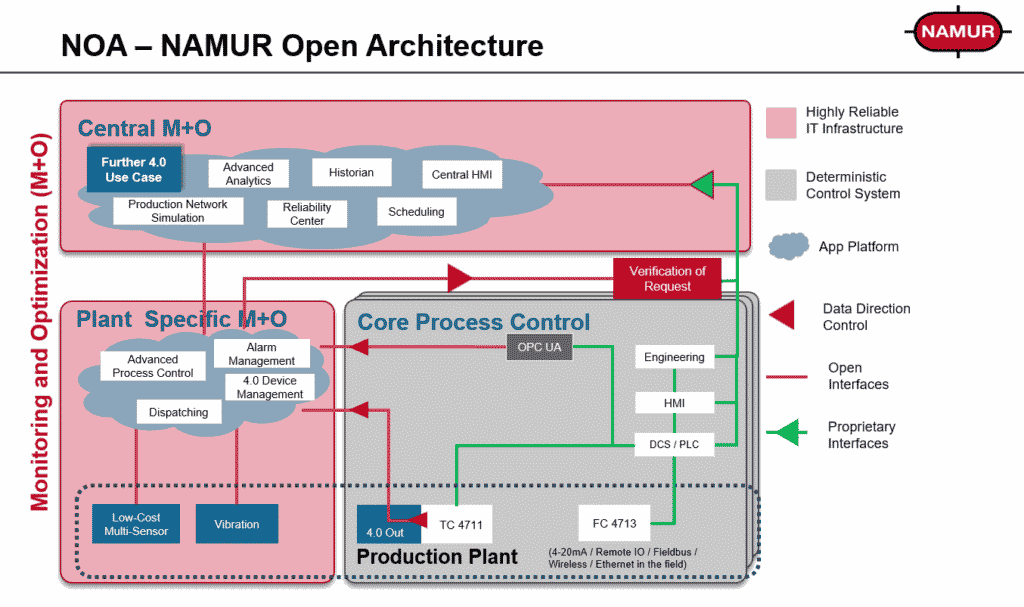NOA – NAMUR OPEN Architecture – is on the march. There are two terms that come up time and time again: M+C sensors and M+O sensors. M+O stands for maintenance and optimisation. They are the new ones. They detect the properties of process components (not the process medium). The detection of vibrations of machine parts – such as pumps or valves – has already become a classic example of pure M+O sensors.
M+C sensors measure the properties of the process medium. These properties include pressure, temperature, concentration, etc. M+C sensors are integrated into the control technology, making them part of the automation pyramid. They are not pure M+O sensors. M+C sensors are generally subject to tough requirements: explosion protection, SIL, media compatibility, etc. This does not tend to apply to M+O sensors, or at least not to the same extent.
What we know for sure…
Here is a question from a process analyser at the 2019 colloquium of the Arbeitskreis Prozessanalytik (Working Group for Process Analytics – AK PAT) regarding M+O sensors: In process analytics, should we now be dealing with vibrations and vibration sensors, for example? I can’t say whether these factors are now part of process analytics or not. But what is clear to me is that process analysers should – and may even want to – be dealing with M+O sensors. But while it is easy to categorise sensors into M+O sensors and M+C sensors on paper, it is not easy in practice.
Sensors, particularly those in process analytics, are often complex instruments. They are part of the field level in the automation pyramid. So they are integrated into the control technology and provide measurement signals that are used to control the process: spectrometers, chromatographs, wet chemistry analysers and, yes, even supposedly simple pH electrodes. In all of these analysers, there are signals and properties that provide information on the correct condition and operation of the analysers: (self-)diagnostic data. This data is communicated more or less freely and is more or less accessible.
Maintenance and optimisation?
This is exactly the information – or in other words the signals – that process analysers have been wanting for a long time. Because while the measurement signals are available via the control technology, the diagnostic data is not always easily accessible. This is often due to the “brownfield” protocols for communication, which may make this data difficult or almost impossible to access. However, this data enables the function of the analyser and the reliability of the analytical data to be monitored (e.g. health check) and operation and maintenance to be optimised. Maintenance and optimisation? M+O?
So we were just talking about M+C sensors, and now we’re on M+O? But that fits exactly with the definition of M+O sensors mentioned above. Sensors that monitor the function of plant components. M+C sensors are plant components. And many already have their M+O sensors on board; in a housing, which is convenient. Nevertheless, I wouldn’t call this a combination of M+C and M+O sensors. Because the requirements that M+C sensors must meet are, as mentioned above, often much tougher. I call them M+C sensors with M+O functionality. In contrast to pure M+O sensors, the diagnostic signals obviously come directly from the control technology.
Thank goodness for NOA
And, thanks to NOA, they will then also be available in brownfield plants through standard protocols and information models. Process analysers are delighted and are working hard to help turn this vision into a reality. We will talk another time about how this data can be combined and evaluated intelligently using appropriate apps.
What will the next sensor roadmap look like?




